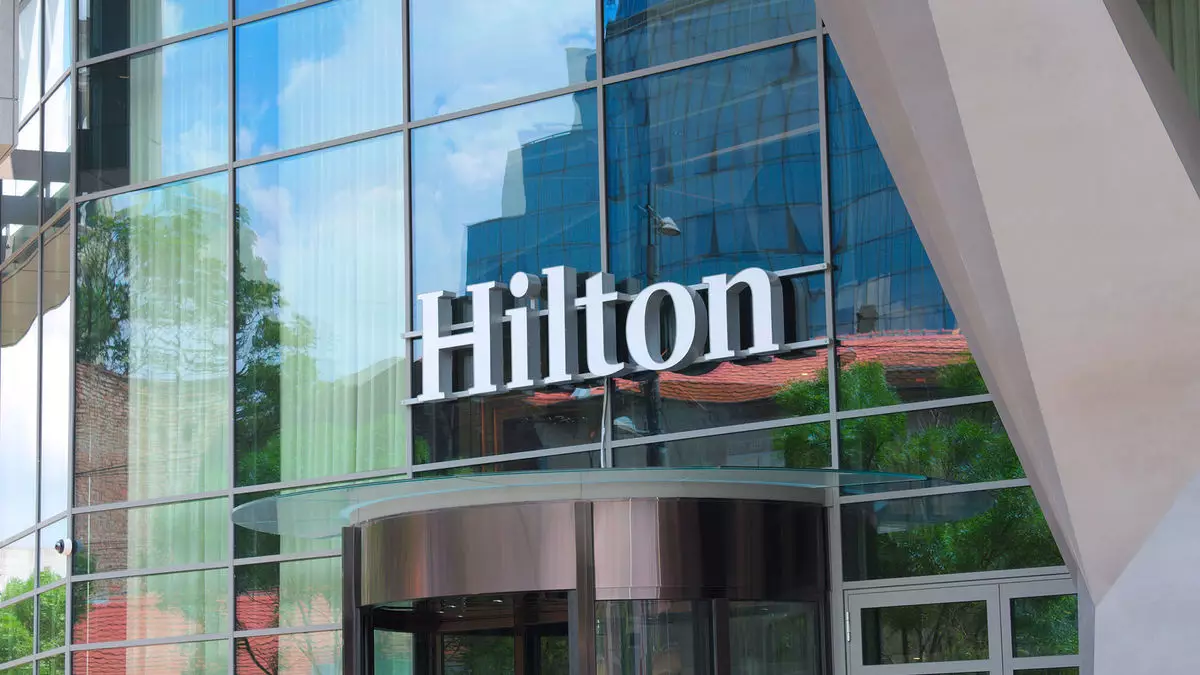The hospitality industry is undergoing a transformative phase, with group bookings rising and business travel recovering, yet challenges persist. This precarious balance was underscored by Hilton CEO Christopher Nassetta during the company’s third-quarter earnings call in late October. While Hilton’s revenue per available room (RevPAR) saw a modest increase of 1.4% year-over-year, it fell short of the company’s estimates, prompting Nassetta to highlight several factors contributing to this discrepancy.
Despite the slight increase in RevPAR, Hilton’s performance reflects broader trends in leisure travel, which Nassetta described as “flat, to maybe even down a little bit.” This stagnation in leisure demand could signify a shift back to pre-pandemic travel dynamics. Analysts appear divided over these trends; while some express concern about a potential spending downturn, others suggest these fluctuations are simply part of the volatility endemic to the hospitality sector.
Michael Bellisario, a senior research analyst at Baird, recently termed the unpredictable events impacting the travel landscape as “ankle-biters,” noting that various factors—from inclement weather to strikes—have the potential to unsettle the market. This acknowledgment of anomalies is crucial for understanding how the hotel industry is maneuvering its way back to stability, given the tumultuous history of travel disruptions.
Labor disputes have emerged as a significant concern within the industry, particularly following rolling strikes organized by the Unite Here hospitality union since early September. Major hotel chains, including Hilton, Hyatt, and Marriott, have faced scrutiny due to labor conditions, particularly in cities such as Boston, Honolulu, and San Francisco. Patrick Scholes from Truist Securities notes that while Hilton, as a global entity, may be insulated from immediate impacts, many individual properties are suffering under the weight of such labor actions.
For example, the Hilton Hawaiian Village Waikiki Beach Resort, a cornerstone of Park Hotels & Resorts’ portfolio, stands out due to its size and significance to operations. Scholes explained that changes at this location could have a substantial financial impact, particularly in light of ongoing negotiations between labor unions and property operators. The uncertainty surrounding these developments reflects a pivotal concern for the industry as it strives to maintain operational revenue.
Amidst these labor disputes, there are underlying shifts in consumer travel preferences that warrant attention. Jan Freitag, national director for hospitality market analytics at CoStar Group, highlighted that price-sensitive consumers are likely to curb discretionary spending due to rising costs across various sectors. This trend is particularly troubling for economy-tier hotels that typically cater to lower-end travelers, as their clientele may become increasingly cautious about expenditures.
Bellisario’s observations about market normalization resonate here; he suggests that weakness originating in the economy segment is beginning to influence upper-tier markets, indicating that even historically robust categories could face headwinds amid evolving consumer priorities. This shifting landscape compels hospitality businesses to adapt quickly to maintain their customer base and profitability.
Insights from Competitors: An Industry Context
Hilton’s challenges are not isolated; competitors like Marriott International are reporting similar trends. During its own third-quarter earnings call, Marriott’s CEO Anthony Capuano expressed that leisure transient RevPAR remained flat but was still higher than pre-pandemic levels of 2019. Such reflections indicate that although recovery is underway, the travel landscape has irrevocably altered, necessitating flexibility from hotel operators.
Bellisario emphasized the shift in travel options available to consumers. Unlike in the pandemic when travel restrictions curtailed choices, today’s open borders and diverse offerings compel consumers to be more price-conscious, opting for available alternatives rather than premium prices for high-demand destinations.
Despite the aforementioned challenges, there are glimpses of optimism in the industry’s future. Analysts point to group business as a growth area—even as this segment adapts to new formats like smaller gatherings booked with shorter notice. As offices continue to blur lines between in-person and remote work, the emergence of this new group travel paradigm suggests shifts in how organizations are approaching gatherings and events.
Furthermore, Hilton’s prospects in business transient travel appear promising, with Nassetta predicting that demand might even surpass previous peaks of 2019 in the coming year. As the industry realigns with fundamental economic indicators such as GDP growth, consumer confidence, and business profitability, a structured recovery certainly seems plausible.
While the hospitality sector faces a multitude of challenges—from labor disputes to evolving consumer behavior—the resilience demonstrated by stakeholders continues to drive a gradual recovery. Navigating these intricacies effectively will be essential if Hilton and its peers seek to thrive in this new travel era.


Leave a Reply